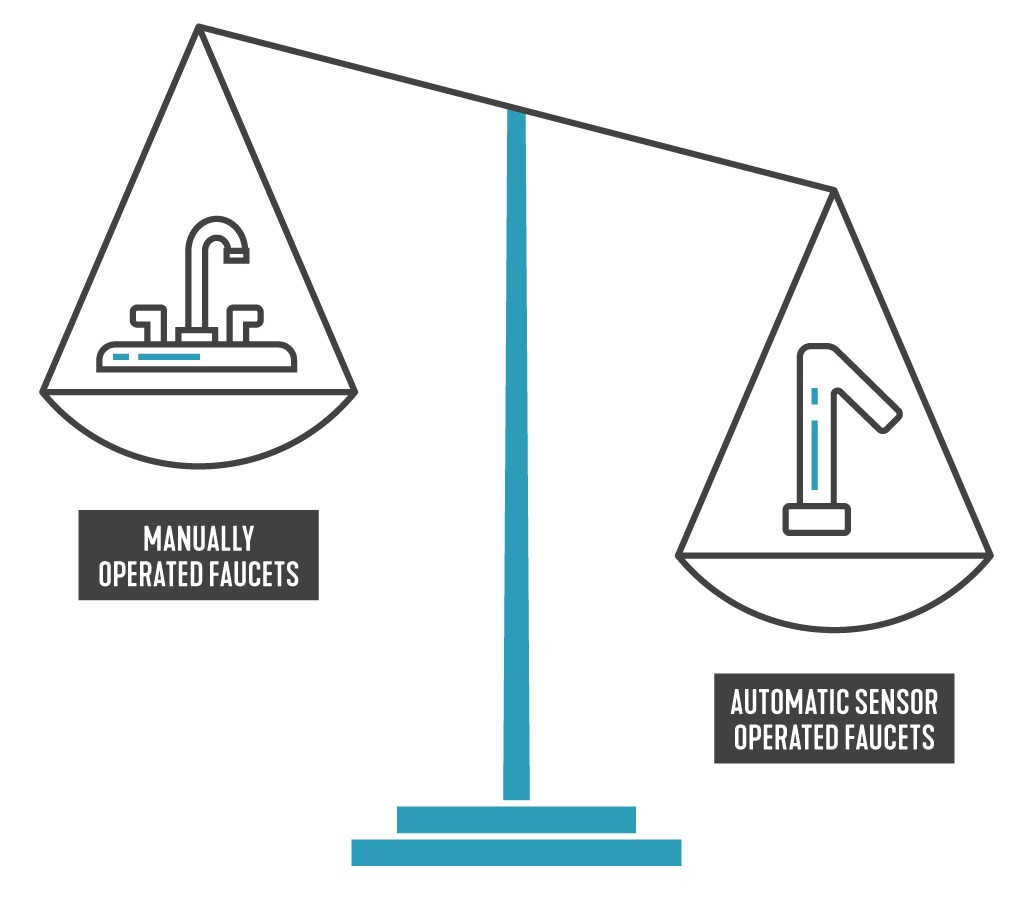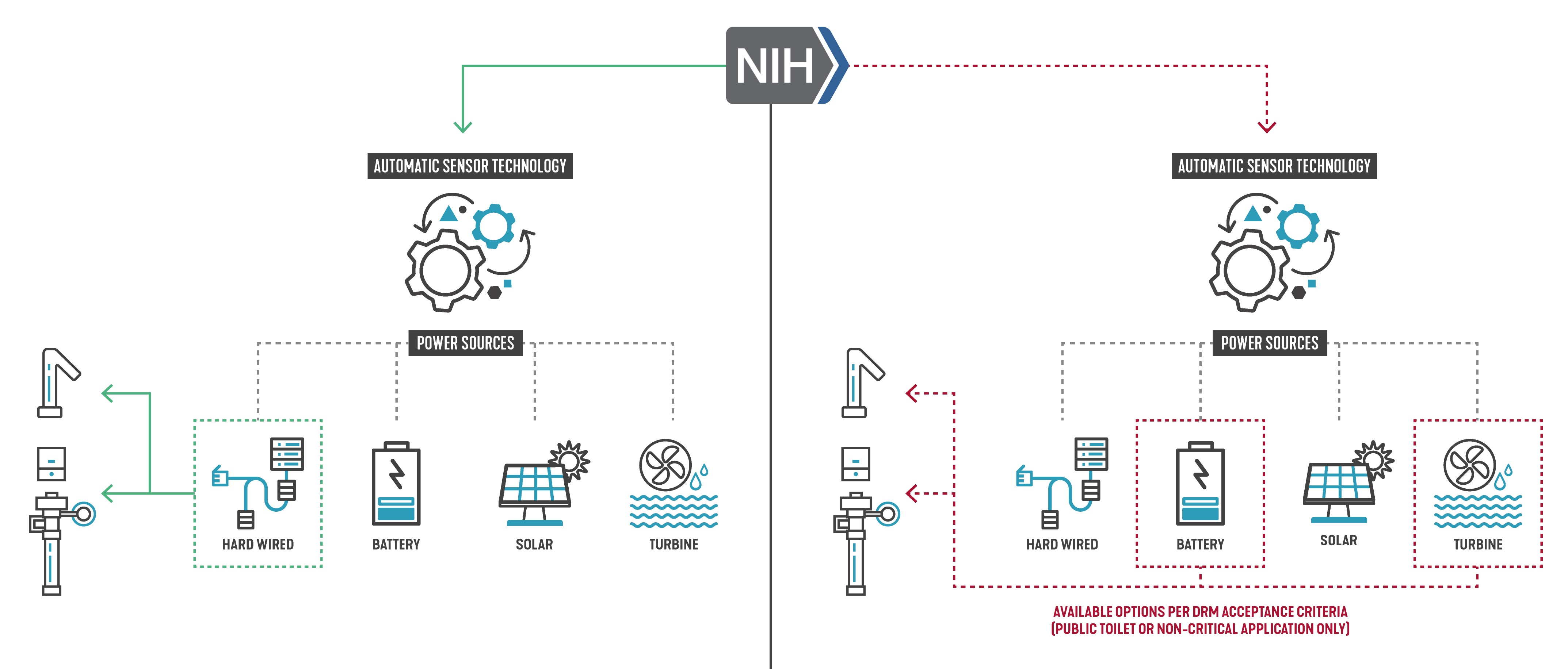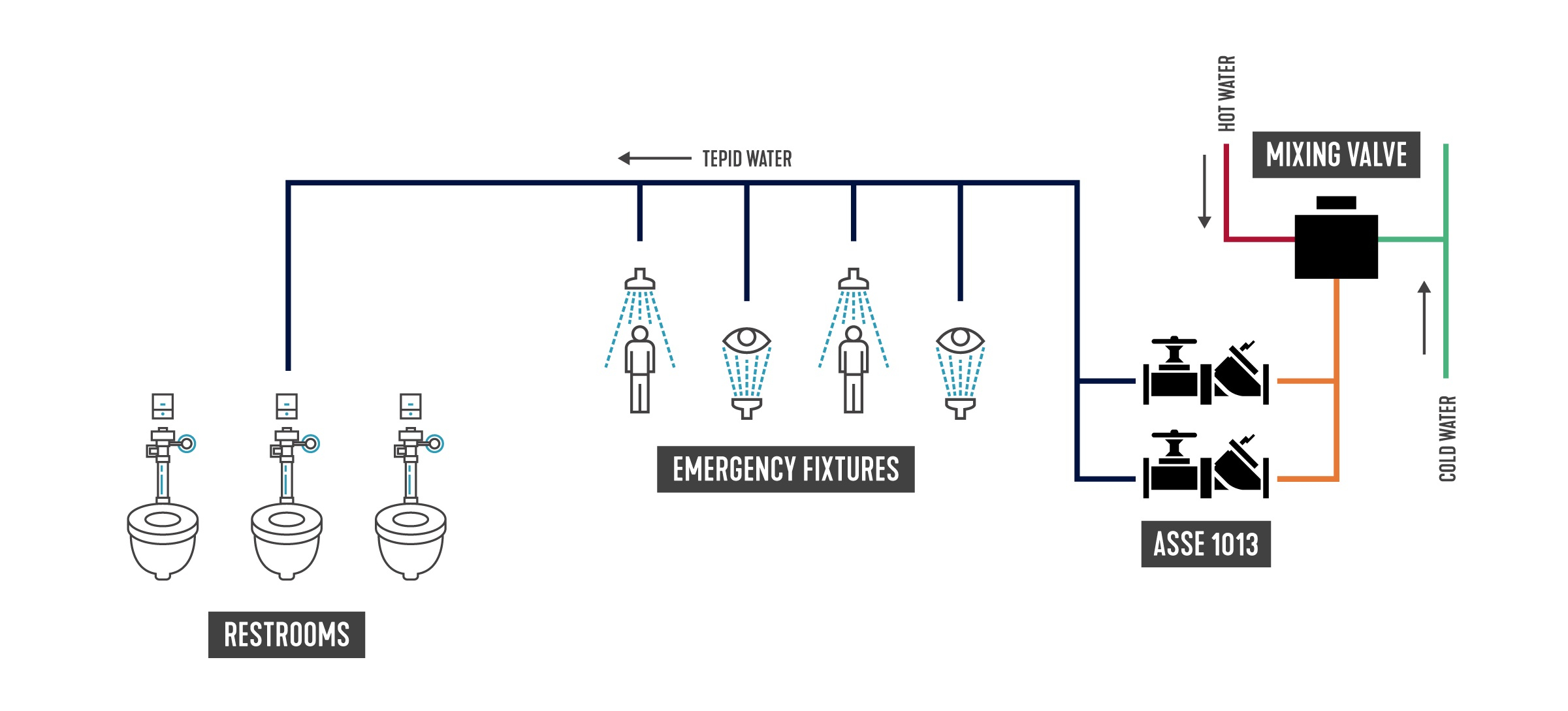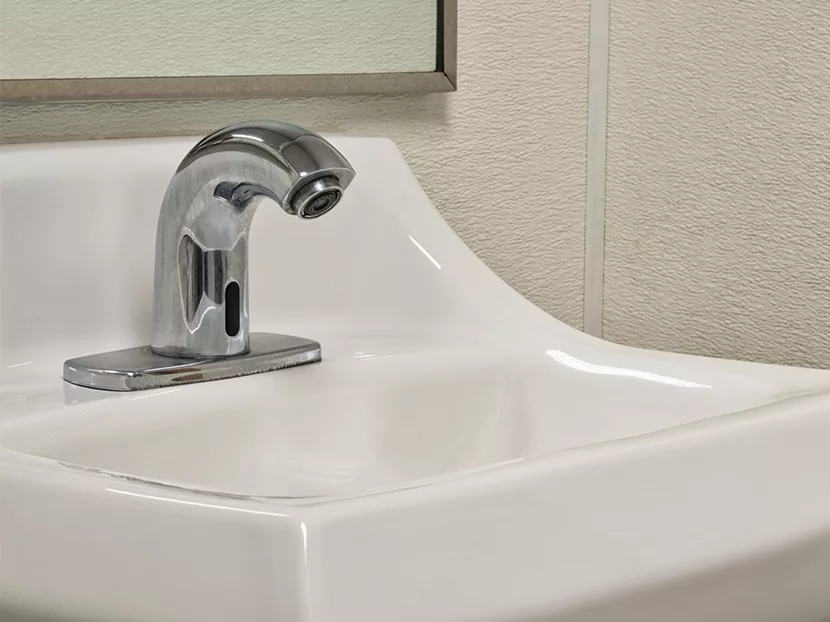Getty Images/iStockphoto
The use of automatic sensor-operated faucets and flushometers is rising and has evolved to become a crucial component of modern restroom design. These fixtures have several benefits not available when using manually operated fixtures: improved safety and accessibility, increased sustainability, and improvements in monitoring maintenance for these components. Additionally, some other benefits and features are available with the application of these automatic fixtures.
Hands-free automatic plumbing fixtures not only improve restroom aesthetics, but also create a safer, more sanitary environment. This is highlighted by the surge in the use of these fixtures during the COVID-19 pandemic. Without human contact to operate the faucet and flush valves, the restroom has fewer contaminants on its surfaces. Fewer contaminants on surfaces combined with fewer people touching surfaces translate to a less potential risk of contamination when surfaces are handled.
Also, since the surfaces of fixtures are being touched less, facilities personnel do not need to clean them as often as manual-type plumbing fixtures.
Hands-free technology provides greater universal access to the fixture since one does not need to reach beyond the fixture to operate handles or flush valves. This improved convenience and reduced time to use the fixture encourages people to develop better, more consistent practices for handwashing and less risk of contamination after washing hands.

While the widespread use of low-flow automatic water fixtures has resulted in significant water savings, there is an increased risk with the use of these fixtures relative to stagnant water. Stagnant water can lose residual disinfection components such as chlorine over time, allowing for the potential growth of organics within the domestic water system.
One way to alleviate this situation is to flush the lines periodically. With manually operated fixtures, one way to protect against stagnant water is to schedule a system flush as part of the regular maintenance and cleaning of the rooms. This approach, however, is not always consistent and can waste water.
Unlike manual fixtures, however, automatic sensors can be programmed to operate for a preset period to limit the amount of time water sits in a particular section of the domestic water system. This allows the domestic water system to be flushed out automatically, even when no facility personnel are in the building, greatly reducing the potential for stagnation and better protecting visitors and personnel who work within the building and use these fixtures.
The benefits of automatic fixtures become even more pronounced for educational facilities, particularly over a school break. Educational facility plumbing fixtures can go unused for weeks to months during holidays and summer breaks. This results in a more significant potential for stagnant water within the domestic water system and more time for contaminant growth.
This combination and potential for rapid organic growth may cause facilities personnel to flush out an entire building’s worth of water to alleviate the issue. However, water quality is consistently maintained with automatic fixtures, even with breaks in occupancy.
Sustainability Practices
Sustainability has been encouraged for many years, and the use of low-flow plumbing fixtures, in particular, leads to significant reductions in water use in restrooms. Additionally, the widespread use of hands-free automatic sensor fixtures has further enhanced sustainability.
One feature typically available as an add-on for automatic faucets is an automatic shut-off timer that regulates water flow for a set amount of time. This allows the authorized user to vary the desired water flow rate and the flow duration when the sensor activates.
For instance, the authorized user may define the flow rate at 0.35 gallons/minute and with an operating time of 20 to 30 seconds. Not only does this prevent a constant water flow, but it also allows people time to scrub soap on their hands without unnecessary dripping and running of water.
Sustainability is not limited to water usage. Automatic fixtures also offer options to reduce energy usage. Manufacturers accomplish this through the use of either solar or turbine-operated fixtures. These approaches help replenish the battery when not in use.
Solar-powered fixtures use the solar energy from the light fixtures within the restroom to charge the battery. Turbine-powered fixtures use the energy of water moving through them and generate power to charge the battery.

Maintenance Practices
Maintenance of plumbing fixtures can be troublesome, especially regarding cleanliness, vandalism and ensuring that plumbing lines are flushed regularly to prevent stagnation. Keeping track of and understanding this for each fixture can be exceedingly difficult, especially when managing high-rise or other facilities with a large number of plumbing fixtures. Such a process is time-consuming and problematic with manual plumbing fixtures but can be streamlined with automatic fixtures.
Data collection is an optional feature of automatic plumbing fixtures that provides intelligent maintenance capability. Information such as total activation or flush time, hours of operation and battery life can assist maintenance personnel in understanding better when preventative maintenance is required. Keeping up with preventative maintenance allows facilities to remain a step ahead and limit potential emergency maintenance.
Smart maintenance functions also allow work to be scheduled without disrupting other building operations. This is especially important in mission-critical facilities such as hospitals where access is restricted.
The data can then be accessed through wireless and Bluetooth technology by an authorized user on a computer, phone or tablet. This allows facilities to access real-time alerts and data. For instance, sensor-automated fixtures with programmable auto-flush features can also record the last event’s time to determine when another may need to be scheduled.
All these technologies will enable the building owner and authorized facilities personnel to easily maintain and operate plumbing fixtures without going to the fixture itself until it’s necessary.
NIH Hands-Free Requirements
The National Institutes of Health (NIH) is an established institution that uses automatic hands-free (sensor-operated) plumbing fixtures. The NIH Design Requirements Manual has strict requirements for designing plumbing systems and selecting plumbing fixtures (https://bit.ly/3hlWMFg).
One such requirement is that restroom automatic plumbing flush valves and faucets use hard-wired, electrically connected sensors. The intent of having hard-wired connections is to reduce maintenance and increase the reliability of automatic fixtures within their facilities. The standard does allow for battery and mini-turbine power sources for noncritical operations only, such as in a public restroom.

Another requirement is the regular flushing of tepid water lines serving emergency plumbing fixtures such as eyewashes and safety showers in laboratories. The intent is to protect against stagnation and possible organic buildup within these water lines.
One way to automate this process is to extend these tepid water lines from the laboratory to toilets in a restroom core. Unlike the emergency fixtures that are rarely used, toilets in a restroom core are used regularly and, when properly connected, maintain a regular flow of water through otherwise stagnant lines. The auto-flush feature adds another layer of protection in assuring water movement.
Automatic hands-free faucets and flush valves provide many benefits, and with the smart features now available, promote increased safety, sustainability and support for more intuitive, proactive maintenance approaches. These fixtures allow building owners and facilities personnel to provide a healthier water system while monitoring operations in ways that are not possible with manually operated fixtures.
Programming and tracking data from these fixtures allows for visualization and understanding of system performance that can then inform systems design and optimization into the future.
Lowell Manalo is the plumbing discipline leader – West Region at SmithGroup. He is a member of the American Society of Plumbing Engineers and has more than 20 years of experience designing plumbing systems for various building types. Lhymwell Manalo is the plumbing designer at SmithGroup’s Phoenix office.




